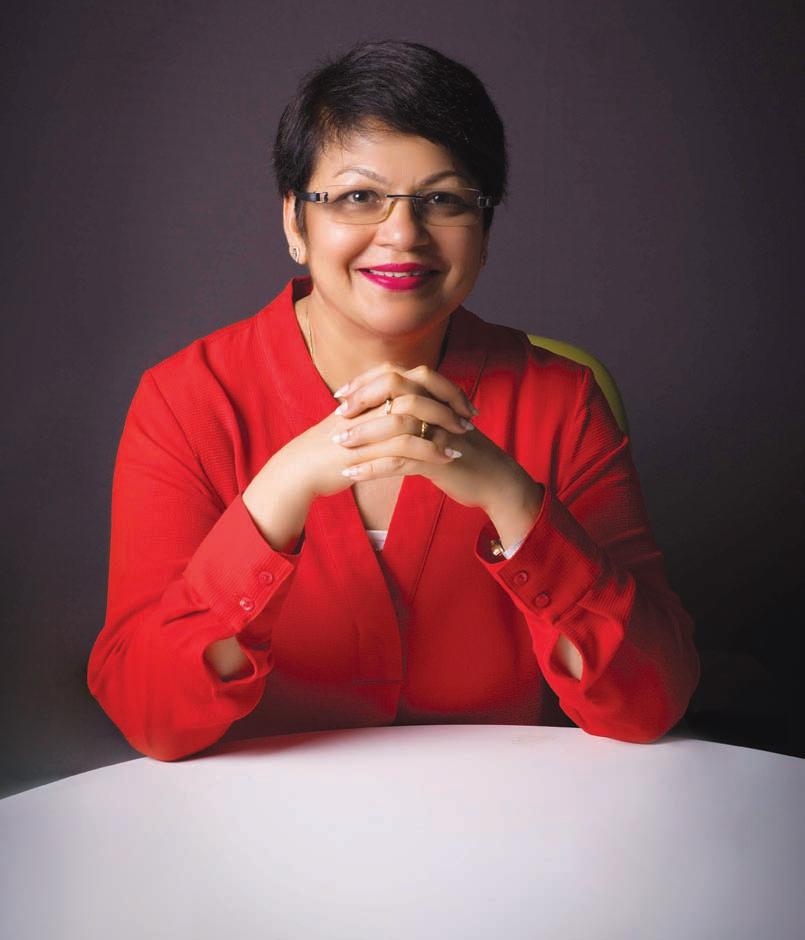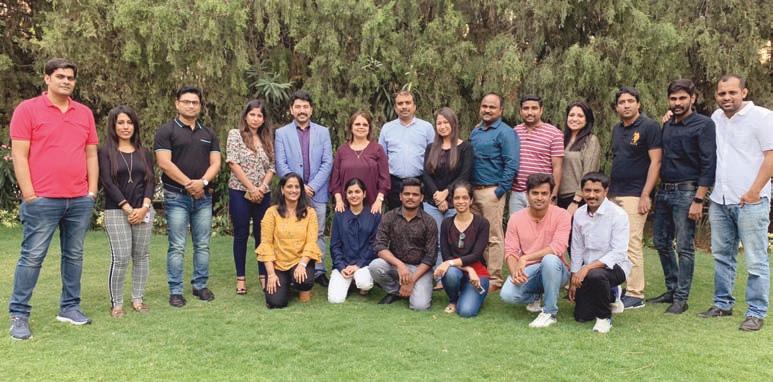
6 minute read
Top Speak’ with Nandini Mehta
from MAXICON VOL 16
Top speAk
THE Human REsouRcEs (HR) DEPaRTmEnT is onE of THE mosT cRiTical aRms in an oRganisaTion. YET, iT is ofTEn consiDERED To bE a cosT cEnTRE. REaD on To
Advertisement
KnoW HoW THE HR DEPaRTmEnT conTRibuTEs To an oRganisaTion’s ToP linE anD boTTom linE, WRiTEs nanDini mEHTa fRom THE DEPaRTmEnT
People are the heart of an organisation. They can make or break a business. Having the right people at the right place, ensuring that the workforce is engaged and productive and providing the right environment and culture where employees are aware of what is their role in the organisation and how do they contribute to the organisation’s goals... From this perspective, the Human Resources Department plays a very important role. While all organisations consider Human Resources function as a support function, I wish to use this forum to enlighten everyone on the role of HR in an organisation. The HR department’s function can be divided into two
segments: strategic activities and transactional activities. Let me begin with the strategic role of HR.
HR works with the Business Head on the organisation’s vision and mission. Based on this, the department figures out the optimum design of the organisation with key functions and roles, and the number of people to be hired. This gives rise to organisational structures, JDs (Job Descriptions), KRAs (Key Responsibility Areas) and KPIs (Key Performance Indicators), roles and responsibilities. Ideally, this needs to be re-assessed every year. Based on the organisation design, HR works out the manpower budget in terms of cost and count, which also needs to correspond with the top line of the organisation (as a percentage of the turnover).
Once the budget is decided, the HR works on sourcing and hiring strategies – whether to develop people from within or hire from outside or use consultants; whether to use job portals or employee referrals. Hence, an annual recruitment plan for new hires and replacements is created.
Other strategies that HR works on are employee benefits such as ESI (Employees’ State Insurance), PF (Provident Fund), Medical Insurance, leaves and other facilities. These need to be in line with the organisation’s philosophy and be able to attract good resources to the organisation.
Just as employees need jobs, organisations need employees to deliver goals and generate business. Hence, an organisation needs to work on strategies to help retain top talent, and who else but HR can build those strategies! This is where ‘Engagement’ and ‘Learning & Development’ (L&D) functions play a critical role. The HR department needs to work closely with the Business Head to plan an employee engagement strategy that is in line with business deliverables to ensure that employees are not just happy to come to work but are also productive. L&D strategies need to be built around business requirements to ensure employees upskill themselves regularly and learn how to deliver their best. Ultimately, the organisation is able to achieve its goals as employees grow in their careers.
Culture is an important element in any organisation. To build, sustain and bring about any change in the organisation culture, the leader depends a lot on Human Resources. This is what we call ‘Organisation Development’ (OD). This function requires the HR department to work closely with leaders in managing and sustaining the company culture and bringing about any change based on changes in expectations
‘Corporate So C ial reS pon S ibility’ i S another to be a SS oC iated with the brand key hr fun C tion. it build S a S trategy to enSure that employeeS and CuStomerS are proud

from the leader. This function of HR also includes identifying critical resources and working on interventions to develop and retain them.
Human resources are the only ones in an organisation that have a head and a heart, thoughts and feelings, which can create friction and issues at the workplace. The most complex aspect of an organisation is managing and resolving these frictions and conflicts in the form of grievance handling. The HR plays a key role in ensuring that an organisation runs with minimal friction and conflicts through various interventions and policies that ensure a safe, diverse, collaborative and happy workplace where employees enjoy working together towards one common goal.
For an organisation to be known in the market, it is important to work on its ‘Employer Branding’. This requires an organisation to showcase its culture and the various initiatives it has taken to make the workplace happy and conducive for its employees. Human Resources works on Employer Branding too.

‘Corporate Social Responsibility’ is another key HR function. It builds a strategy to ensure employees and customers are proud to be associated with the brand/ organisation for their community service. Many organisations arrange retreats and meets for senior leaders to discuss the year gone by, and the way forward. Another function of HR is to work with the Business Head and senior leaders on this. On this basis, the organisation’s future is decided with regard to its goals and vision.
The transactional activities where HR plays a critical role include Payroll Management where HR needs to ensure that all employees get salaries and other benefits on time. Employees’ daily needs also need to be taken care of. organisational and individual levels, such as licenses, ESI, PF and bonus. The HR department needs to ensure that all these are applied for and renewed or dispersed.
So, what does the HR do at Max and the Landmark Group? By now, you may be wondering whether I have downloaded a synopsis of HR theory from the internet! However, my dear friends, I wish to state here that over the last 10 years, the HR functions at Max and Landmark have been able to create a huge impact as it moved from being only a transactional function to becoming a transformational function, contributing immensely to the strategic role of being a business partner.
We have been able to support the business in creating an ‘employer brand’ by consistently topping the charts amongst retailers in the Great Places to Work survey and also being in the top 50 across industries over the last seven years through our various interventions in OD, L&D, Engagement and now, technology. It has been a huge journey that we have taken in being able to partner with business at a strategic level by aligning all HR interventions to the organisation and business leaders’ goals and driving the business strategy along with the Head and leaders.
An organisation is definitely as successful and strong as its HR functions, and I have seen this in my journey at Max. With HR interventions becoming strong, people have become more engaged with the organisation and have shown ownership in driving the organisation’s goals. This is clearly seen with engagement scores going up, attrition coming down, internal growth increasing and, above all, the business growing year by year at an incredible rate.
Hats off to the Human Resources team of Max and Landmark Group India that has taken this wonderful journey under its able leadership. It would be any HR personnel’s dream to work in such an organisation that has seen amazing growth in every facet over the last decade.
I wish I could write more as I have not even started with every initiative that we have implemented, but I can assure you that while every manager may think that HR is simple, they will surely change their mind after reading this article.




